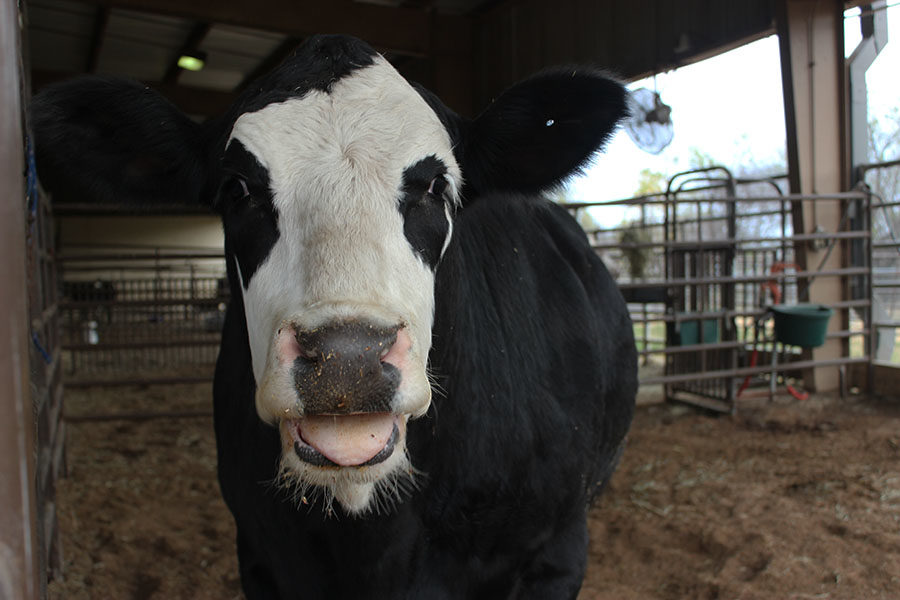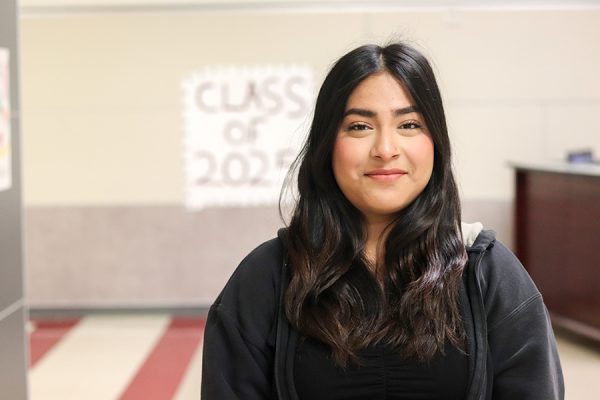Raising their future careers
FFA students prepare for next round of competitions
An FFA cow sticks out its tongue.
Future Farmers of America, commonly known as FFA, is an organization in which students compete using their knowledge of agricultural techniques. Every year, various high schools chapters of FFA join together and compete in different segments of the program.
Many of the FFA students share one commonality: preparing for their competitions. They work from the beginning to the end of the school year. Some even study their materials throughout the summer.
“We have many students that are involved in all three segments which are leadership development events (LDE’s), career development events (CDE’s) and supervised agricultural experiences (SAE’s),” agricultural science and FFA co-sponsor Justin Browne said.
Because there are three segments of competitions, they are divided into different seasons throughout the year. With 54 active members currently in FFA and competitions looming, weekly meetings are a necessity.
“[At the start of the year] we provide [the students] with material that is needed for them to study and then we hold practices a few times a week during that particular contest season,” Browne said. “They are also required to study on their own time to help them learn the information.”
Within the three different segments students have the opportunity to participate in public speaking, entrepreneurship or showing an animal.
“LDE’s are segments which focus on creating situations for members to demonstrate their abilities in public speaking, decision making, communication and their knowledge of agriculture,” Browne said. “[The LDE’s] take place in the fall so that it is focused on from the start of school until we are finished with the contests in November.”
Junior Elora Crofts has been preparing for the LDE and SAE segments.
“I am currently competing in prepared public speaking and creed speaking; I have been working over the summer in order to prepare my speech,” Crofts said. “Last year I competed in public speaking [which I placed second in] and creed speaking,”
Once the LDE’s are finished, the team will prepare to compete in the next round which are the CDE segments. They will first show their livestock in January at the Fort Worth Stock Show. Heifers will be shown Jan. 18 to 22, goats on Jan. 24 to 28 and steers on Jan. 30 to Feb. 2. Crofts will be joining the the veterinary medicine entrepreneurship CDE and this will be the first time she tries out.
“CDE’s are designed to help a member prepare for a career in agriculture by testing and challenging the student’s leadership skills as well as their knowledge of the subject at matter,” Browne said. “ [The competitions that are held] are in the spring so we start preparing for those once we have finished with LDE’s.”
There are five categories that tie into SAE: animal projects, entrepreneurships, placement, research and experimentation, and exploratory. SAE projects give students a way to interact with animals and with people who have agricultural experience.
“SAE [is] a hands-on, real-life agricultural career preparation experience,” Browne said.
SAE animal projects require students to fully commit and take care of their animals. This means their mornings and afternoons are consumed with the responsibilities of their animals.
“[To take care of my pig,] I have to travel to a barn off of [Highway] 121 at least two times a day,” senior Fredrick Anderson said. “In the morning I feed my pig, give it water, groom it, clean its pen and walk it and then at night to do the same thing.”
With students everyday lives revolving around agriculture, it’s easier for them to develop the skills they need for the future.
“Agriculture is the most important part of our lives because of the things that it provides for us that we often just take advantage of, such as clothes and food,” Browne said. “The saying in the agriculture community is ‘Without agriculture, we would all be hungry and naked.’”












